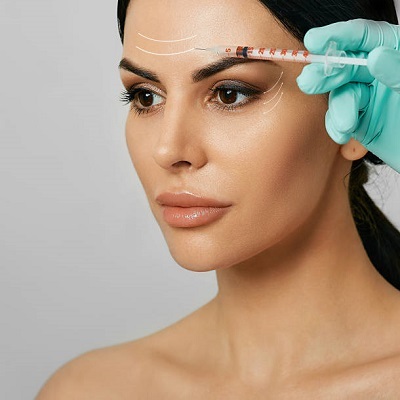Introduction
Migraines are more than just a severe headache; they are a debilitating neurological condition that affects millions of people worldwide. Characterized by intense, pulsating pain often accompanied by nausea, vomiting, and sensitivity to light and sound, migraines can significantly impact quality of life. Traditional treatments, such as medications and lifestyle modifications, have been the cornerstone of migraine management, but a newer option has emerged: Botox. Originally developed as a cosmetic treatment for wrinkles, Botox has gained recognition at Botox injections Clinic in Oman for its potential in alleviating chronic migraines. This article explores the effectiveness of Botox in treating migraines, its mechanism of action, and its benefits and limitations.
What is Botox?
Botox, or botulinum toxin, is a neurotoxic protein produced by the bacterium Clostridium botulinum. When used in small, controlled doses, Botox can temporarily paralyze muscles by blocking nerve signals. This property has been harnessed for various medical and cosmetic purposes, including reducing wrinkles, treating muscle spasms, and alleviating chronic migraines. The U.S. Food and Drug Administration (FDA) approved Botox for the prevention of chronic migraines in 2010, marking a significant advancement in migraine treatment.
How Does Botox Work for Migraines?
The exact mechanism by which Botox relieves migraines is not fully understood, but several theories have been proposed:
- Neurotransmitter Modulation: Botox is believed to inhibit the release of neurotransmitters, such as substance P and CGRP (calcitonin gene-related peptide), which play a role in transmitting pain signals to the brain. By blocking these neurotransmitters, Botox may reduce the frequency and severity of migraine attacks.
- Reduction of Inflammation: Another theory suggests that Botox may reduce inflammation in the brain and surrounding tissues. This anti-inflammatory effect could contribute to fewer migraine episodes.
- Muscle Relaxation: Botox may help by relaxing the muscles around the head and neck that can contribute to migraine pain. Reducing muscle tension might alleviate some of the pain associated with migraines.
The Procedure
Botox treatment for migraines involves a series of injections into specific areas of the head and neck. The procedure typically takes about 15-20 minutes and is usually performed in an outpatient setting. The injections are administered in areas where migraines are commonly felt, such as the forehead, temples, and the back of the head. Patients generally experience minimal discomfort during the procedure, and there is no need for anesthesia.
Effectiveness of Botox for Migraines
Clinical Evidence
Numerous clinical studies have evaluated the effectiveness of Botox for chronic migraines. A landmark study published in the Journal of the American Medical Association (JAMA) demonstrated that Botox could significantly reduce the frequency of migraine attacks in patients with chronic migraines. The study found that patients who received Botox injections experienced an average reduction of about 8-9 headache days per month compared to those who received a placebo.
Further research has supported these findings, showing that Botox can reduce the frequency of migraines and improve quality of life for many patients. A review published in Neurology in 2019 confirmed that Botox is an effective preventive treatment for chronic migraines, with patients experiencing a significant decrease in headache days and an improvement in overall function.
Patient Experience
While clinical studies provide robust evidence, individual experiences with Botox for migraines can vary. Many patients report significant relief from chronic migraine symptoms and a reduction in the frequency of their attacks. However, some individuals may not experience the same level of benefit and may need to explore other treatment options.
Benefits and Limitations
Benefits
- Long-Lasting Relief: Botox treatments typically provide relief for up to 12 weeks, making it a convenient option for those who do not want to take daily medications.
- Minimal Side Effects: Most patients experience only mild side effects, such as temporary bruising or headache at the injection site. Serious side effects are rare.
- Improved Quality of Life: For many patients, Botox offers significant improvement in daily functioning and overall quality of life by reducing the frequency and severity of migraine attacks.
Limitations
- Cost: Botox treatments can be expensive, and insurance coverage may vary. The cost of a series of injections can be a barrier for some patients.
- Not a Cure: While Botox can be effective in reducing migraine frequency, it is not a cure. Patients may still experience migraines, albeit less frequently.
- Variable Response: Not all patients respond to Botox in the same way. Some individuals may not experience significant relief and may need to try alternative treatments.
Conclusion
Botox has emerged as a promising option for the prevention of chronic migraines, offering a valuable alternative to traditional treatments. Clinical evidence supports its effectiveness in reducing the frequency and severity of migraine attacks, and many patients report significant improvements in their quality of life. However, it is essential to consider the cost, potential limitations, and individual variability in response when evaluating Botox as a treatment option.
For individuals struggling with chronic migraines, Botox may provide a welcome respite from the debilitating symptoms of this condition. As with any medical treatment, it is important to consult with a healthcare professional to determine the most appropriate and effective approach for managing migraines based on individual needs and circumstances.





Comments